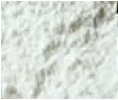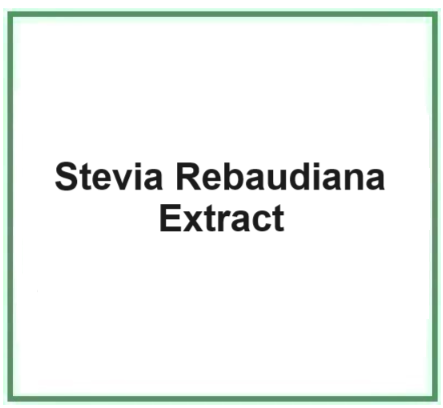Stevia Rebaudiana Extract is a substance obtained from the Stevia rebaudiana plant, used as a natural sweetener in many food products and beverages.
The name describes the structure of the molecule.
- Stevia Rebaudiana refers to the plant from which the sweetener is extracted. Stevia rebaudiana is a perennial herbaceous plant native to South America, specifically Paraguay and Brazil.
- Extract indicates that the active or desired compounds have been extracted or isolated from the original plant. In the context of stevia, the extract is typically rich in steviol glycosides, which are the compounds responsible for the sweetening power.
Description of raw materials used in production.
- The main raw material for stevia extract is the Stevia rebaudiana plant. It's a small perennial herbaceous plant native to South America.
Step-by-step summary of its industrial production process.
- Leaves are harvested from the Stevia plant.
- These leaves are then dried and subjected to a water extraction process.
- Once extracted, the steviol glycosides are separated from other parts of the leaf.
- The resulting liquid is then filtered and further purified through processes like chromatography and crystallization.
- The extract is then dried, resulting in a concentrated white powder that contains the steviol glycosides.
Form and color.
Stevia extract typically comes in the form of a white powder, but it can also be available in liquid form.

Commercial applications.
Food
Stevia extract is a natural sweetener used in many food products and beverages as an alternative to sugar and other artificial sweeteners. It's particularly popular among those seeking low-calorie or sugar-free options.
Cosmetics
Flavoring agent. The purpose of this ingredient is to modify the solution to impart a certain flavour. Natural flavouring extracts are rather expensive, so the cosmetic and pharmaceutical industries resort to synthesised substances that have sensory characteristics mostly similar to natural flavourings or are naturally equivalent. This ingredient is isolated through chemical processes or is synthesised from chemicals. It is also referred to as Aroma.
CAS 91722-21-3
EC number 294-422-4
Stevia rebaudiana Bertoni is a native plant of South America belonging to the Asteraceae family, with a long and dated history of medicinal plant first used in traditional medicine against diabetes and hypertension.
Its leaves are nowadays commercially utilized by the food and pharmaceutical industry as they produce secondary metabolites (diterpene glycosides), which are about 300 times sweeter than sucrose (1).
Its benefits in medicine range from hypertension to diabetes and this study confirms that a treatment with Stevia in 250mg tablets produced a significant improvement in the biochemical parameters of patients with chronic kidney disease (2).
Results suggest that oral administration to rats of a watery extract of dried leaves of Stevia induces systemic and renal vasodilation, causing hypotension, diuresis and natriuresis (3).
Stevia has many pharmacological and therapeutic applications, as suggested by many preclinical studies and some clinical trials; the properties of Stevia are non-toxic and have antioxidant, antimicrobial, antifungal and anticarcinogenic activities (4).
Bibliografia___________________________________________________
(1) Stevia Rebaudiana Bertoni, a Source of High-Potency Natural Sweetener-Biochemical and Genetic Characterization. Dyduch-Siemińska M, Najda A, Gawroński J, Balant S, Świca K, Żaba A. Molecules. 2020 Feb 11;25(4). pii: E767. doi: 10.3390/molecules25040767.
(2) Preliminary analysis of the effect of Stevia (Stevia rebaudiana) in patients with chronic kidney disease (stage I to stage III). Rizwan F, Rashid HU, Yesmine S, Monjur F, Chatterjee TK. Contemp Clin Trials Commun. 2018 Aug 21;12:17-25. doi: 10.1016/j.conctc.2018.08.007.
(3) Chronic administration of aqueous extract of Stevia rebaudiana in rats: renal effects. Melis MS. J Ethnopharmacol. 1995 Jul 28;47(3):129-34.
(4) Nutritional and therapeutic values of Stevia rebaudiana: A review Ena Gupta1, Shalini Purwar1, Shanthy Sundaram, G. K. Rai Vol. 7(46), pp. 3343-3353, 10 December, 2013 DOI: 10.5897/JMPR2013.5276 ISSN 1996-0875 ©2013 Academic Journals
![]() Stevia Rebaudiana Extract
Stevia Rebaudiana Extract 


